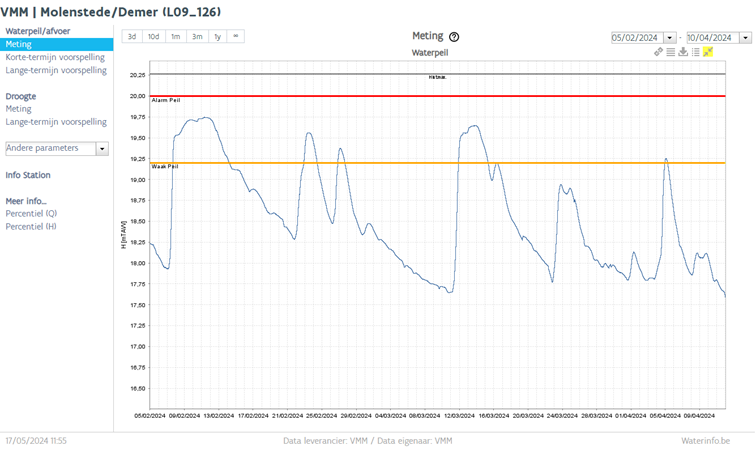In the past few months, it has rained a great deal, so we were often confronted by very high water levels indeed. In that regard, the reconnection of the meanders in Vinkenberg, which was realised with support from LIFE Belini, is not only providing added value from an ecological perspective, but also in terms of buffering capacity.
Buffering capacity and water resources management
This realignment is one of more than 30 meanders that are being reconnected as part of the Demer Valley Sigma Plan. The project aims to create a wider valley with more room for water. The ultimate goal is twofold: to reduce peak runoff towards downstream areas and to provide more time to intervene during flood events.
The effect of reconnecting meanders
During several periods of flood discharge, the valley area near the meander at Vinkenberg functioned well in its role as a buffer zone for water.
As you can see on the graph at waterinfo.be, the water level in the river Demer on 11 February was extremely high: the entire area of the valley was needed in order to accommodate it. On the photo, you can see how the sluice allows some of the water from the Demer to flow along the original course of the Demer whenever large quantities of water need to be drained away.

 Vinkenberg @De Vlaamse Waterweg
Vinkenberg @De Vlaamse Waterweg
 On 5 April, the water level is lower and the water is flowing over the sluice. The entire area of the valley is therefore not needed. During less extreme discharges, all of the water still flows through the meander. This mechanism is very important for the purpose of water resource management and as a means of protecting residential areas.
On 5 April, the water level is lower and the water is flowing over the sluice. The entire area of the valley is therefore not needed. During less extreme discharges, all of the water still flows through the meander. This mechanism is very important for the purpose of water resource management and as a means of protecting residential areas.
In addition, the effects of reconnecting meanders on the watercourse and upon nature are being closely monitored by the University of Antwerp. Because these processes take place only slowly, the results will only become apparent after long-term monitoring.



